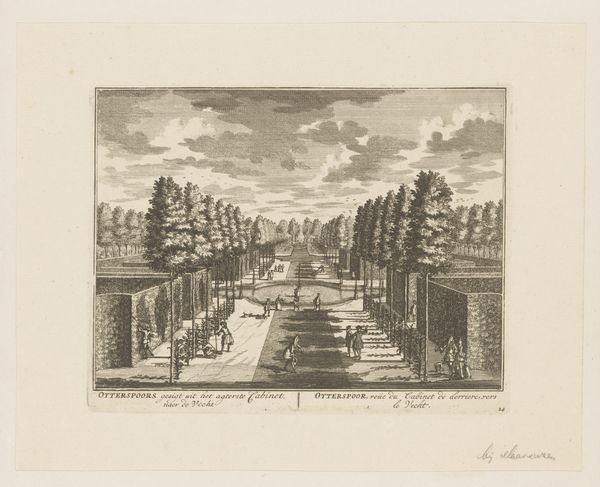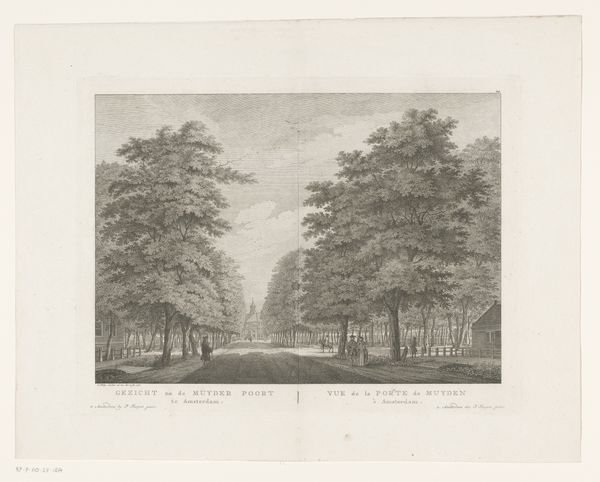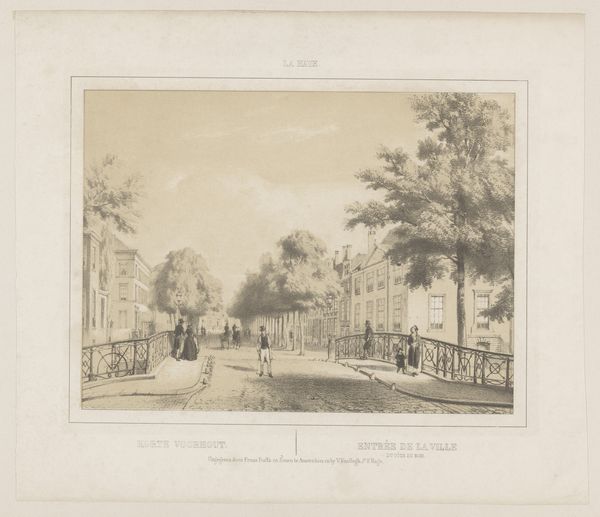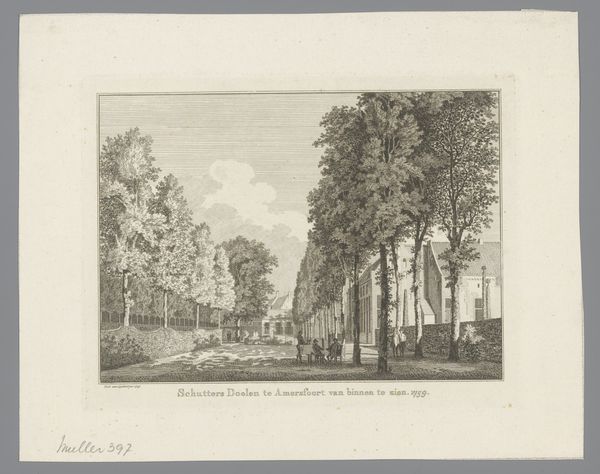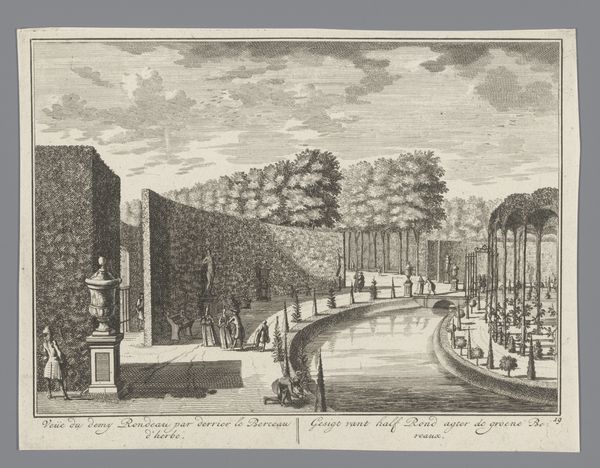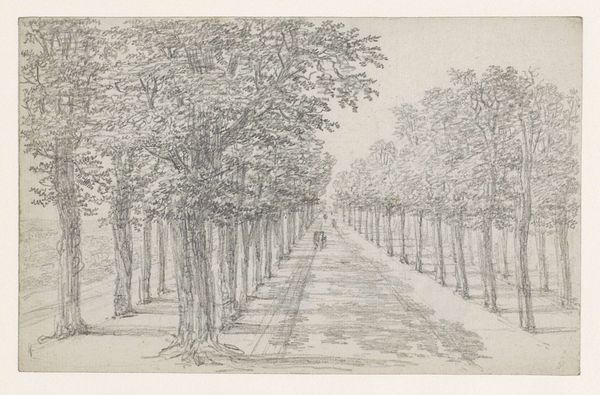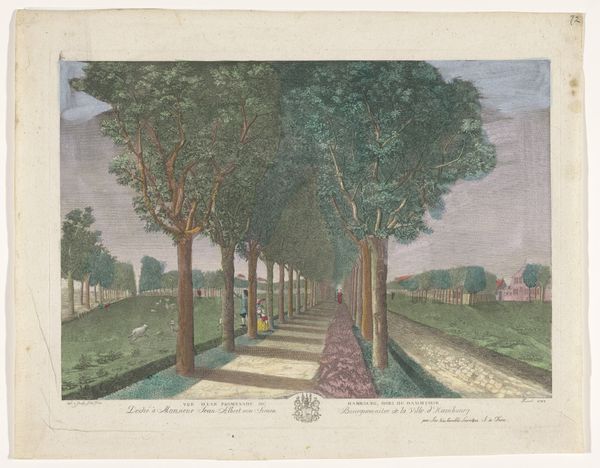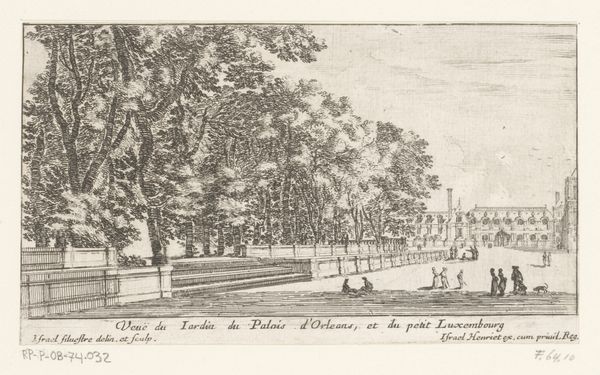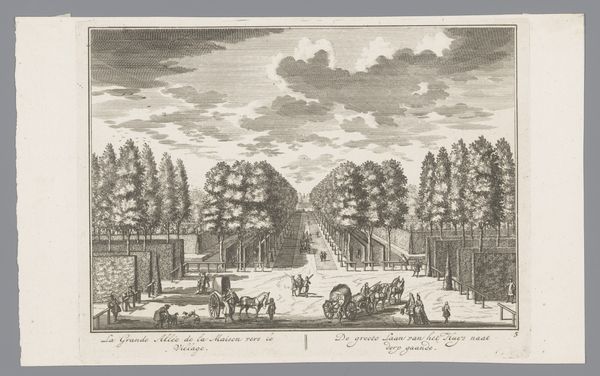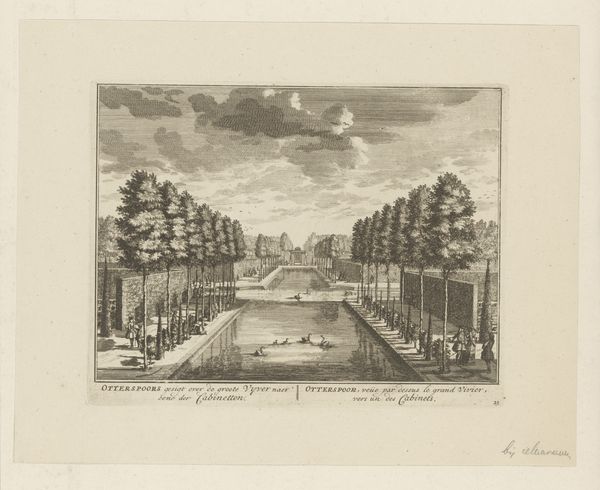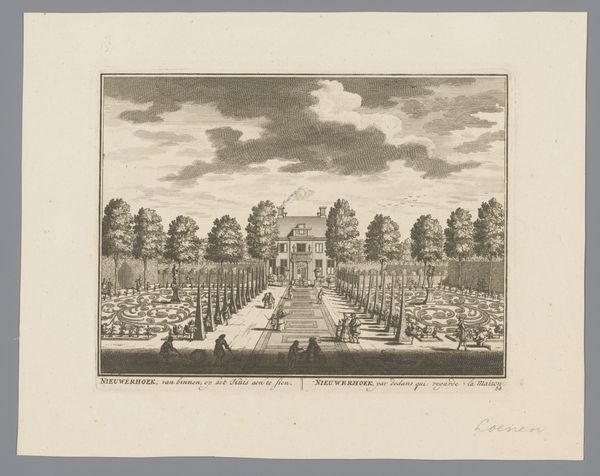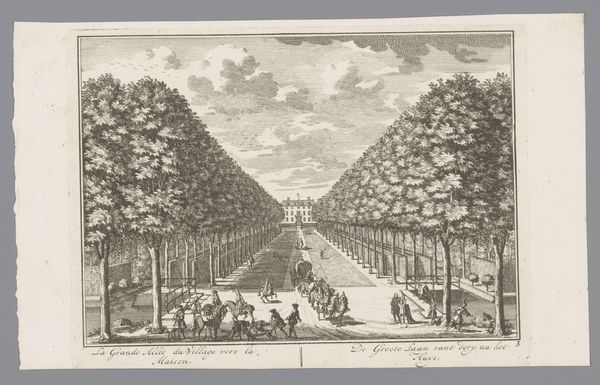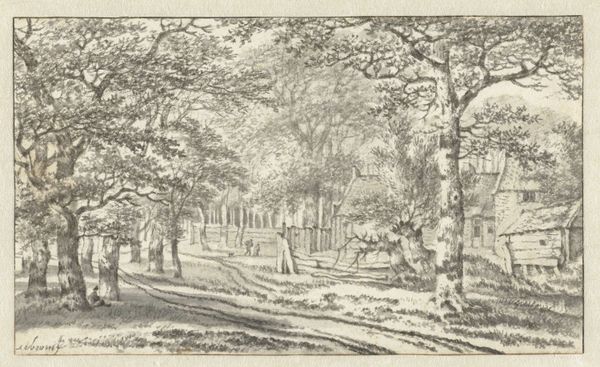
Gezicht in de centrale laan achter de tuin van Slot Zeist 1682 - 1726
0:00
0:00
danielstopendaal
Rijksmuseum
print, engraving
#
baroque
# print
#
landscape
#
perspective
#
geometric
#
line
#
cityscape
#
engraving
Dimensions: height 159 mm, width 212 mm
Copyright: Rijks Museum: Open Domain
Curator: This engraving by Daniël Stopendaal, dating roughly from 1682 to 1726, presents a view of the central avenue behind the garden of Slot Zeist. What strikes you first about this baroque-era print? Editor: The intense geometry of the garden design immediately catches my eye, a human attempt to impose perfect order onto nature. The perspective almost forces you down this rigidly planned path, reflecting societal control, perhaps even privilege. Curator: Indeed. Formal gardens like these, popular across Europe at the time, served as visual statements of power and wealth. They represented a mastery over the natural world. Zeist, of course, was owned by Count Willem Adriaan van Nassau. Editor: It's telling how the people strolling along the path seem almost secondary, like decorative elements within this constructed landscape. How did the garden function within Dutch society back then? Curator: Gardens such as this were sites of display and social exchange. The Dutch elite would parade through the avenues, making a clear declaration of their position within the strict social hierarchy. Editor: And looking at the lines of trees marching off into the distance, there's something about it that suggests restricted access. The geometric patterns used were designed to separate some from the larger society of the day. Curator: Yes, such rigid layouts emphasized restricted spaces. In terms of technique, the fine lines of the engraving allowed Stopendaal to capture a level of detail necessary to the garden's intricate patterns. This method provided great control over line and shade, therefore creating depth and perspective. Editor: Knowing this artwork is housed in the Rijksmuseum encourages reflection on the evolution of power structures. From personal garden space reserved only for the wealthy class of the day to artwork within museum walls accessible for a wide audience. Curator: Certainly, these images are records, offering a glimpse into Dutch cultural values, social dynamics and aesthetics, therefore offering new understandings. Editor: Precisely. By bringing awareness to how carefully designed environments were created as tools of social status, then the discussion opens towards a modern context too, exploring questions around architecture, equality, and even urban planning.
Comments
No comments
Be the first to comment and join the conversation on the ultimate creative platform.

